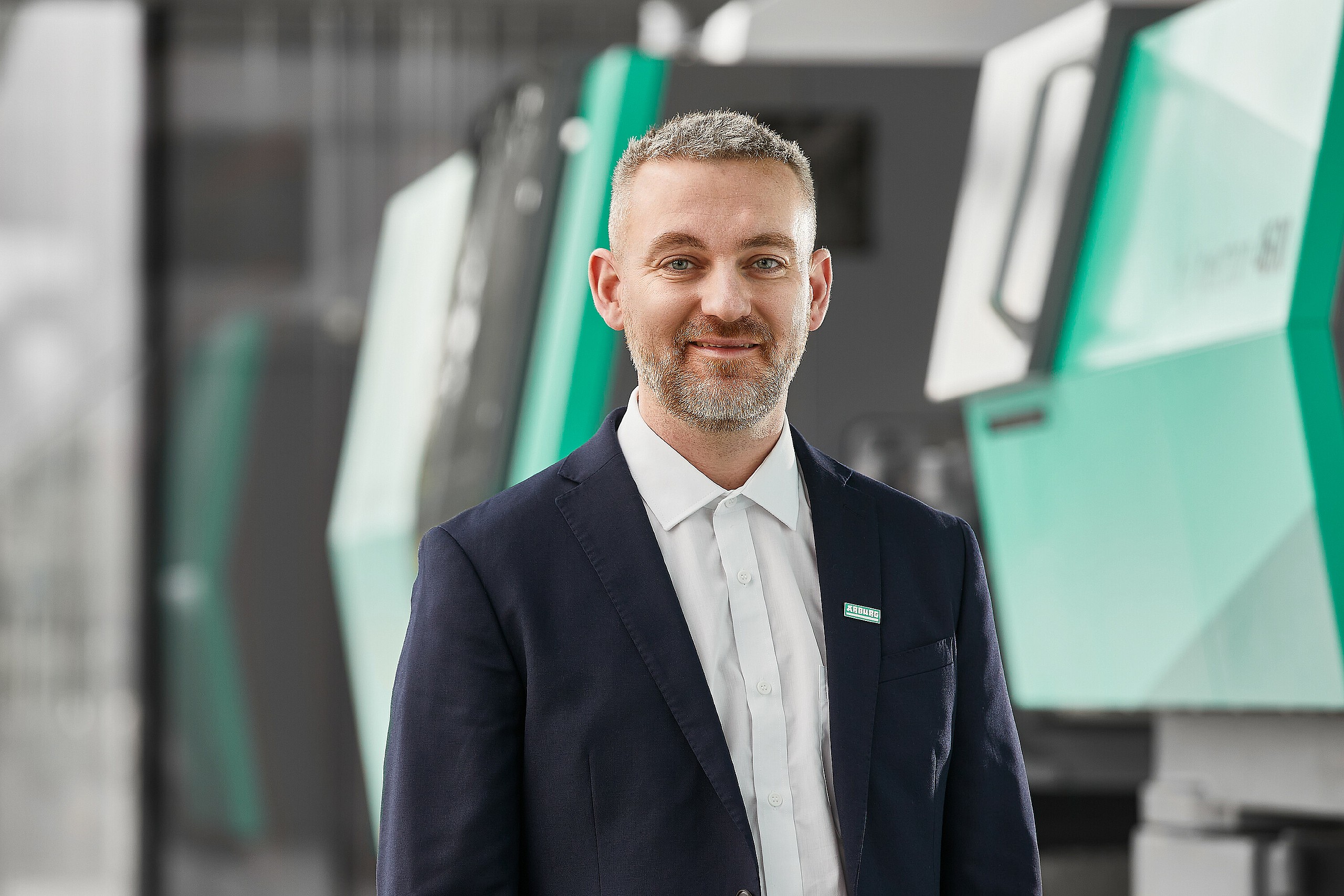Employee profile: Gavin John
There are well-documented skills and employment gaps in manufacturing. Some of this problem can be alleviated with more automation, especially for operations that require simple lifting and placing – while robots also offer reliability, accuracy, and “lights out” work. ARBURG customers are showing more interest than ever in robots, Gavin says, but it can be a long, multi-layered process. “Of course, you have to assess that a robot is a viable solution for the task, and increasingly we now produce a full productivity and ROI report that shows them the payback based on increased piece rate and constant running,” he says.
Gavin’s strong interest in automation started early. His first job was an apprenticeship at ARBURG Ltd customer in South Wales in 2008. The company were already using some automation and Gavin moved into a maintenance engineer job. He combined the apprenticeship while completing a BSc (Hons) degree in electrical and electronic engineering at the (now) South Wales University. By now, it was clear the ARBURG offered a career where these specific skills would be valued. He didn’t have to wait long to join ARBURG – straight after just completing the engineering degree he was offered the job as service engineer. Starting there in 2015 and progressing to senior service engineer, Gavin honed his interest in automation systems for moulding, training on the MULTILIFT – ARBURG’s proprietary robot system – and cartesian robots. His predecessor started a new “turnkey” and automation division, and when he left ARBURG, Gavin stepped into the vacant role.
